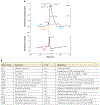Cardiac Pacemaker Activity and Aging
- PMID: 31756134
- PMCID: PMC7063856
- DOI: 10.1146/annurev-physiol-021119-034453
Cardiac Pacemaker Activity and Aging
Abstract
A progressive decline in maximum heart rate (mHR) is a fundamental aspect of aging in humans and other mammals. This decrease in mHR is independent of gender, fitness, and lifestyle, affecting in equal measure women and men, athletes and couch potatoes, spinach eaters and fast food enthusiasts. Importantly, the decline in mHR is the major determinant of the age-dependent decline in aerobic capacity that ultimately limits functional independence for many older individuals. The gradual reduction in mHR with age reflects a slowing of the intrinsic pacemaker activity of the sinoatrial node of the heart, which results from electrical remodeling of individual pacemaker cells along with structural remodeling and a blunted β-adrenergic response. In this review, we summarize current evidence about the tissue, cellular, and molecular mechanisms that underlie the reduction in pacemaker activity with age and highlight key areas for future work.
Keywords: aging; cardiac pacemaking; intrinsic heart rate; maximum heart rate; sinoatrial node.
Figures




References
-
- Homer. 1990. Iliad. London: Penguin
-
- Robinson S. 1938. Experimental studies of physical fitness in relation to age. Eur. J. Appl. Physiol 10(3):251–323
-
Seminal study showing age-dependent declines in mHR.
-
- Robinson S, Dill DB, Tzankoff SP, Wagner JA, Robinson RD. 1975. Longitudinal studies of aging in 37 men. J. Appl. Physiol 38(2):263–67 - PubMed
-
- Heath GW, Hagberg JM, Ehsani AA, Holloszy JO. 1981. A physiological comparison of young and older endurance athletes. J. Appl. Physiol 51(3):634–40 - PubMed
-
- Tanaka H, Monahan KD, Seals DR. 2001. Age-predicted maximal heart rate revisited. J. Am. Coll. Cardiol 37(1):153–56 - PubMed
Publication types
MeSH terms
Grants and funding
LinkOut - more resources
Full Text Sources

